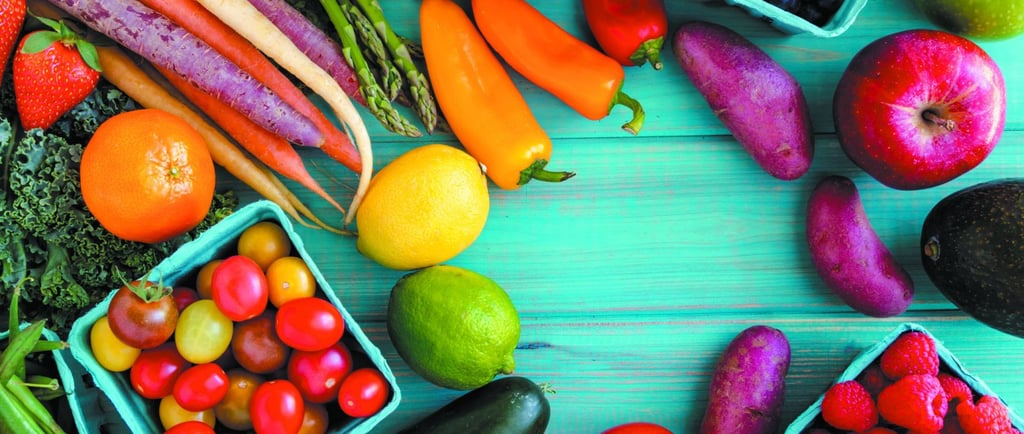Free Shipping Above 999/- Flat 5% Off Above 1999/- Use Code"GARDENLOVE5
How to Setup Kitchen Garden in Cities
3 min read


Setting up a kitchen garden in cities can be a fun and rewarding experience. Even if you live in an apartment or have limited space, it's possible to grow fresh herbs, vegetables, and fruits. Here’s a simple, point-wise guide on how to set it up:
1. Choose the Right Space
Find a Sunny Spot: Most plants need at least 4–6 hours of sunlight a day. Choose a balcony, terrace, windowsill, or any other sunny spot in your home.
Indoor or Outdoor: Depending on your space, you can either set up your garden indoors (on windowsills or in containers) or outdoors (on balconies, rooftops, or patios).
2. Select the Right Containers
Pots or Containers: Use pots, trays, or raised beds to grow your plants. Make sure they have drainage holes to prevent waterlogging.
Size: Choose containers based on the plant size. Small plants like herbs need smaller pots, while larger vegetables (like tomatoes) need bigger pots.
Material: Plastic, clay, and wooden containers work well. Make sure they're durable and won't crack in extreme weather.
3. Choose the Right Plants
Easy-to-Grow Plants: Start with herbs like mint, basil, thyme, and parsley. Vegetables like spinach, lettuce, tomatoes, and carrots are good choices for beginners.
Consider Climate: Pick plants that suit your city’s climate. For example, if it’s hot and dry, consider drought-resistant plants.
Companion Planting: Some plants grow well together (like tomatoes and basil). Do some research on companion planting to improve growth.
4. Use Good Quality Soil
Potting Mix: Buy good-quality potting soil that is rich in nutrients and drains well. Avoid garden soil as it can be too heavy and may cause root rot.
Add Organic Matter: Add compost or organic fertilizers to improve soil health.
5. Watering
Proper Watering: Water your plants early in the morning or late in the evening. Ensure that the soil is moist but not soggy. Over-watering can damage plant roots.
Use a Watering Can or Drip Irrigation: For small gardens, a watering can is sufficient. For larger setups, a drip irrigation system can save time and water.
6. Fertilizing
Organic Fertilizers: Use compost, cow dung, or other organic fertilizers to nourish your plants. Avoid chemical fertilizers as they may harm the environment and the plants in the long run.
Frequency: Fertilize your plants every 2–4 weeks during the growing season (spring to fall).
7. Pest Management
Natural Solutions: Use neem oil, garlic spray, or soap water to control pests. You can also introduce beneficial insects (like ladybugs) to eat harmful pests.
Healthy Plants: Keep your plants healthy, as strong plants are less likely to be affected by pests.
8. Support for Climbing Plants
Trellis or Stakes: For plants like beans, peas, or tomatoes that need support, use a trellis or stake. This keeps them upright and helps them grow efficiently.
9. Regular Maintenance
Prune and Trim: Remove dead leaves or stems to encourage fresh growth and prevent disease.
Monitor Growth: Keep an eye on your plants for signs of stress or disease. Early detection helps in better management.
10. Harvesting
Pick When Ready: Harvest your vegetables and herbs when they are fully grown. Regular harvesting promotes more growth.
Don't Over-Harvest: Only take what you need, leaving the plant to continue growing.
11. Seasonal Adjustments
Change Plants with the Seasons: In winter, you may want to grow more hardy plants like spinach and kale, while in the summer, tomatoes and peppers thrive.
Move Plants Indoors During Cold Months: If you're in a city with cold winters, move your plants inside to protect them from frost.
12. Enjoy the ProcesS
Experiment and Have Fun: Gardening is about learning and experimenting. Try growing new plants and enjoy the fruits (and veggies) of your labor!
Involve Family or Friends: Gardening can be a fun family or community activity, so get others involved in planting and care.
By following these simple steps, you can easily grow your own kitchen garden in the city. It's a great way to enjoy fresh, homegrown produce, and it’s also very satisfying to know where your food is coming from!
